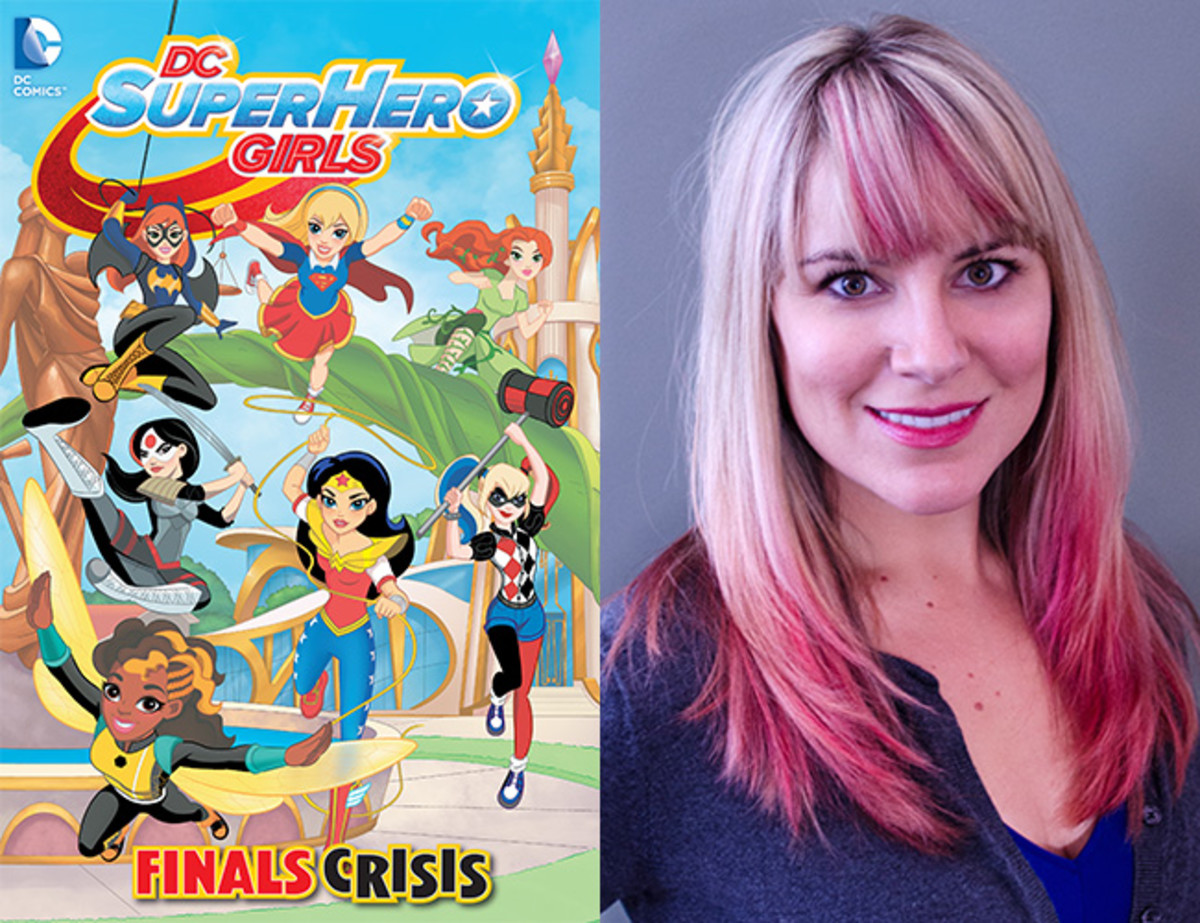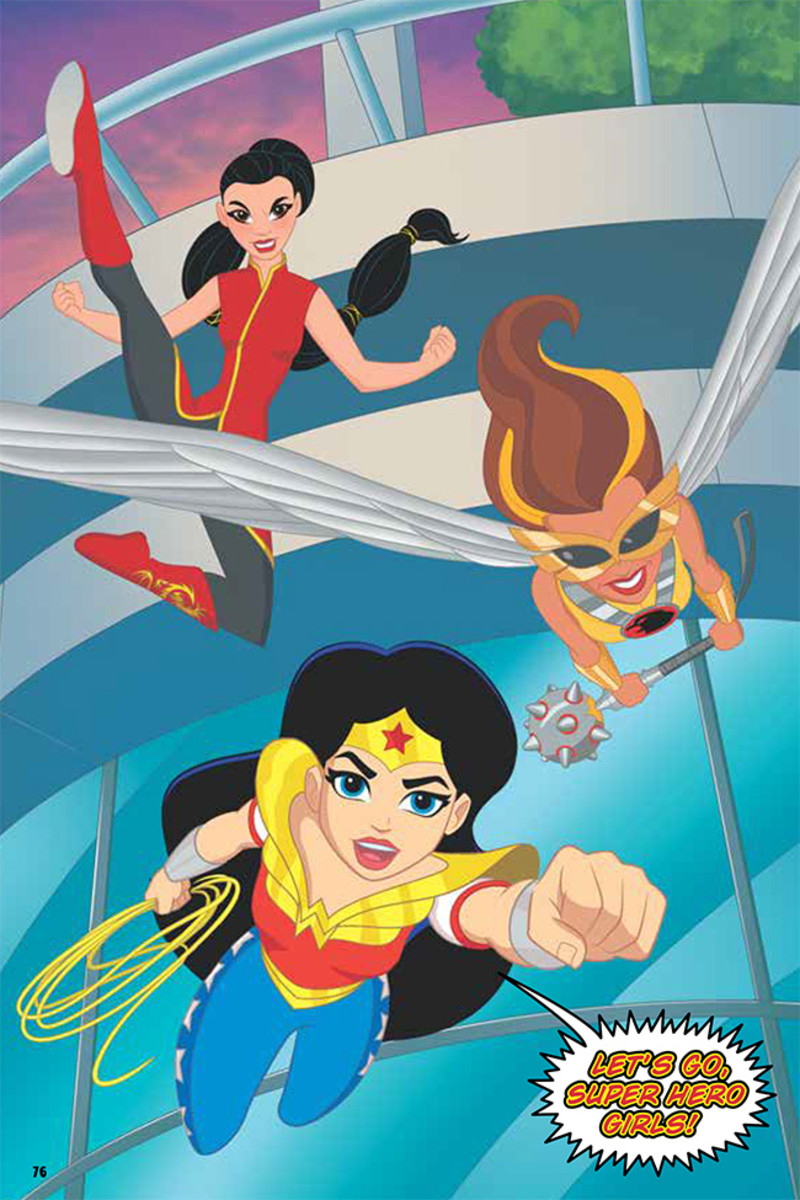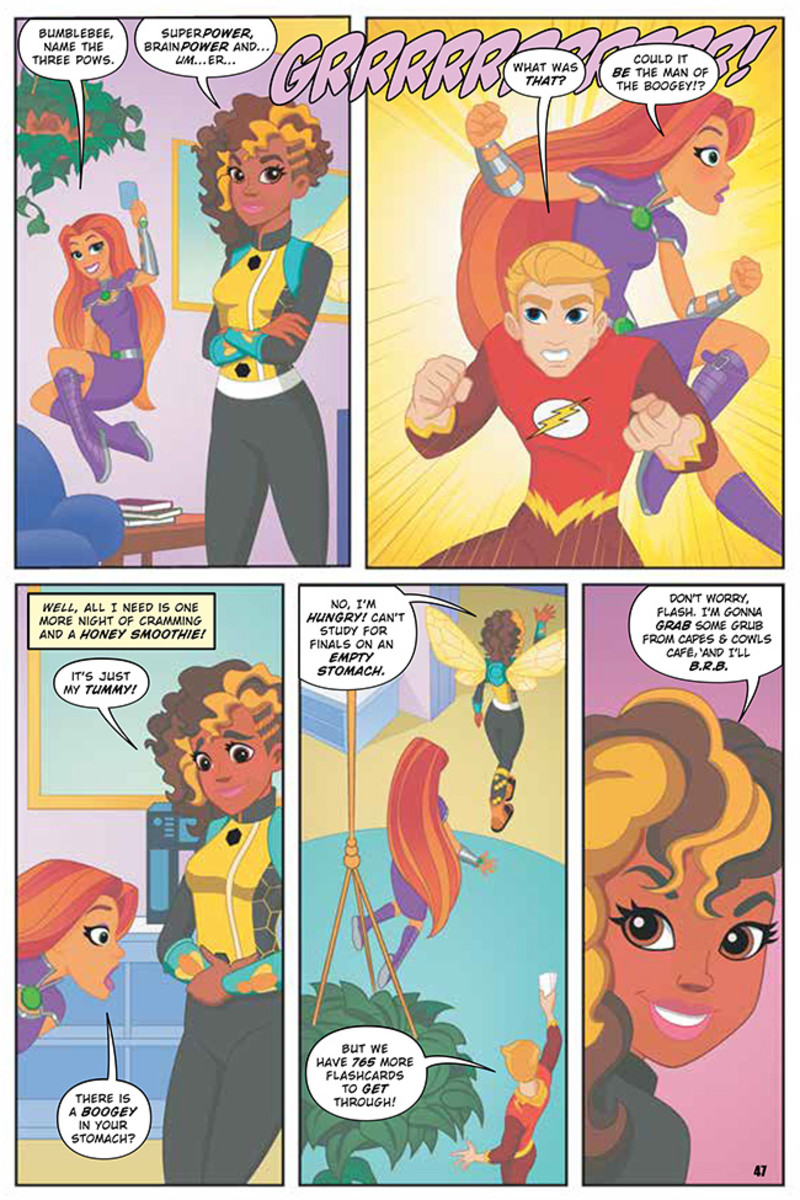DC’s Super Hero Girls Face a Finals Crisis!


Kids around the country are celebrating the end of another school year — and so are some of the most iconic characters in comic books!
On June 29, DC Comics released the graphic novel Finals Crisis, which wrapped up the first year of its DC Super Hero Girls universe. And if you think you were stressed out about final exams, just wait until you see what Wonder Woman, Supergirl, Batgirl, and their classmates at Super Hero High have to deal with!
SI Kids spoke with writer Shea Fontana about working on the DC Super Hero Girls series, what it’s like to tell stories with iconic characters, and the differences between writing comic books and animated TV shows.
For kids who don't know, could you kind of explain the concept behind DC Super Hero Girls?
Sure! DC Super Hero Girls is a whole new universe targeted especially for girls 6-12, and it takes all of our favorite DC superheroes like Wonder Woman, Supergirl, Batgirl, Bumblebee, Harley Quinn, [Poison] Ivy, Kitana and puts them in a high school setting. It is a coed school, there are boys there like Beast Boy and Flash, but it's really focused on empowering girls and showing girls at the forefront of their own stories and heroes of their own stories. We really want to inspire girls to take on those heroic personas and be their own hero. We have a bunch of animated shorts up on the website right now. We have a TV special that was on Boomerang a few months ago. We have a movie coming out. And what we're talking about now is the graphic novel.
And this the first graphic novel as part of the series, right?
Yes, this is the very first graphic novel. It's called Finals Crisis, which our hardcore DC fans will know the play on Final Crisis, which is a DC series from a few years ago. So this first graphic novel is the night before finals at Super Hero High, and we see all of our main seven girls and the different ways they are preparing — or not preparing, in Harley's case — for finals. Each chapter is from a different character's perspective, and as they are getting ready for finals there is a supervillain on the loose in Metropolis who's picking them off one by one.
It's a cool story. And what's great about the book is that the characters are instantly recognizable to anyone who reads or has read comics but, at the same time, they are different enough to feel unique.
Oh, thank you. That's definitely what we wanted. Because this is a different universe, it's not canon, and we're taking these superhero characters and putting them in a much younger version than we're used to seeing. We're really focused on keeping the DNA of the characters and making sure that we stay true to all those things that people love about the characters from the comic books and the movies and all the things they've already seen them in, then make sure they're really fun teenagers and they're really embodying this teenage world.

What kind of challenges did you run into writing these characters? Some of them are so iconic, like Wonder Woman and Supergirl. How do you put them in this universe while not kind of losing who they are or what people will recognize?
I think it's really just getting back to core characteristics that have made someone like Wonder Woman so lovable for 75 years. We want to make her recognizable as Wonder Woman, and make sure that she's really portraying all these things that Wonder Woman stands for. Wonder Woman's been this feminist icon for so long. She's the woman who is at the forefront of the battle and no one's going to take her down. So it was always important to us to really keep those characteristics intact. And I did have to do quite a bit of research. I didn't grow up reading comics, but I got into comics, basically, from the TV side. When I was a kid I watched a lot of Batman: The Animated Series and Lois and Clark: The New Adventures of Superman. So it did take a bit of research to get into some of these characters that I wasn't familiar with. And it was really fun to get to know the big DC universe, and I just scratched the surface.There's so much content that's been put out there in the 75 years of doing Wonder Woman. I only read just a tiny portion of it, but it's really fun to get to read comic books as my job.
Was there one character you were most excited to work with?
When I was a kid, I really liked Batgirl because she was this person who didn't have any innate super powers. She couldn't fly like Supergirl or have x-ray vision, but she used her brain and her smarts to make herself super — she built these gadgets and she can fly as fast as Wonder Woman in her Batplane. So I always really liked Batgirl and that idea that anyone can be super and anyone can make themselves a superhero. So I was really excited to write her. But I would say now, as we get going, my favorite to write is Harley Quinn because she is hilarious and she just brings this fun life and energy into everything she does.
Was there a character that's part of the Super Hero Girls universe that you found yourself sort of surprised by how much you enjoyed working with them?
I was really surprised by Bumblebee. I didn't know Bumblebee well from the comic books before. She was originally introduced, I think, in 1980 in the Teen Titans comics. But I wasn't really familiar with her. She's one of the more obscure characters that we're bringing to the forefront. And I really enjoyed getting to know this character. She's just so fun and she's outgoing and she's kind of the glue that holds a lot of these characters together. She's a peacemaker and she's friendly and she's that kind of girl who you want to be your best friend.

What's the experience like — and what are the differences between — writing for television versus writing for a graphic novel?
They are actually really different, I think. I started from the animation side, so that's how I actually got into DC Super Hero Girls. They were looking for an animation writer, and then from there I helped with the development of the world and the characters and a bunch of the animation writing. And they asked if I would be interested in writing the graphic novel, as well. And I was terrified because I had never written a comic book before. Before I started working on this, I'm not sure I had even seen a comic book manuscript before. So it's very much a different format and a different way of looking at stories. In animation, you're really thinking about using movement and action and making animation come to life by making sure everybody's always busy doing something. But in a comic book, you're telling stories panel by panel, so there's no motion. There are ways to show the idea of motion within comics, but it's really focusing on what moments tell the story. So you're distilling down a story that in animation, it's 14 frames per second, so you have hundreds of thousands of actual still pictures for an episode, where in a graphic novel you're only going to have maybe five or six panels per page. So you have a very limited space to actually tell the story and find the images and the moments in the story that best make the story come to life.
Did working on this graphic novel impact you as a television writer?
Yeah, definitely. It really made me start thinking more visually as a writer and really understanding how artists set up. When you're writing a graphic novel you have to be very specific for every panel to make sure you're getting the images that you want to tell the story. And I think that's really helped me as an animation writer, to really think, "What are those visual moments?" When you're writing a graphic novel, basically the reader should be able to follow the story without reading any of the captions or the text. So you're thinking of the pictures that tell the story, and that should be the same with animation. You really want to use the visual medium to tell the story.
So for a girl (or a boy) or comes across DC Super Hero Girls and thinks they want to get into comics or animation, what would advice would you give them to get started?
I would say write as much as you possibly can, and also watch a lot of TV and read a lot of comics. I don't know if their parents will appreciate me saying that, but definitely taking in the things that you love and start to break down when you're reading a comic how is this working, or watch a TV show and think about things like act breaks. And how you understand that is by watching it and getting into it, and then you really step through the door of the rhythm as a storyteller.
Photos: DC Comics
